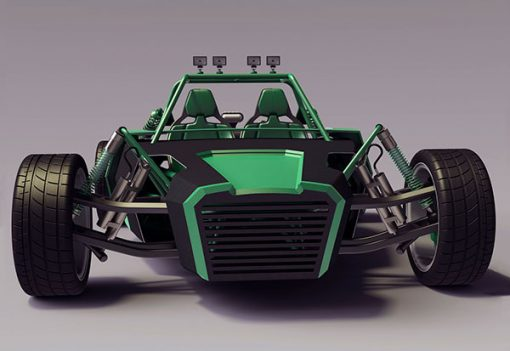Historical Overview of Dune Buggies
Originating as custom off-road vehicles, dune buggies were initially built on the Volkswagen Beetle chassis, leveraging the durability and simplicity of its air-cooled motor. This design was particularly suited to the deserts of the US Southwest and Mexico, leading to the term “Dune Buggy.”
Evolution of Dune Buggy Design
Today, dune buggies are recognized for their custom tube frame chassis and the choice between rear or four-wheel drive configurations. They are equipped with various tire types, including treaded and sand paddle, and feature a large travel suspension for navigating rough terrains and jumps.
Integral Aspects of Designing a Dune Buggy
Designing a dune buggy requires expertise in key areas such as handling, chassis, suspension, powertrain, aerodynamics, and safety. A comprehensive understanding of how changes in one area impact others is crucial. The design process is often iterative, with modifications enhancing overall performance.
Key Design and Construction Challenges
- Weight Distribution: The front of the buggy is typically lighter due to the rear/mid-engine configuration, affecting handling dynamics;
- Suspension: The design should ensure optimal tire contact and manage camber changes due to long suspension travel;
- Chassis: The chassis must provide easy access to internal components for maintenance purposes;
- Powertrain: The engine position significantly influences weight distribution, necessitating careful planning of intake, cooling, and exhaust systems;
- Aerodynamics: Efficient bodywork design is essential for maximizing speed, especially in high-speed racing scenarios.
Financial Implications of Building a Dune Buggy
Building costs vary significantly based on whether the buggy is intended for casual off-road use or competitive racing. Using parts from small production cars can reduce costs, but racing standards typically demand higher-quality components.
Preparing for Dune Buggy Racing
Racing a dune buggy involves additional expenses, including consumables like tires and engine parts. The racing environment also influences the wear and tear on the vehicle, impacting maintenance costs.
Comparison Table: Evolution of Dune Buggy Design
| Era | Chassis Base | Drive Configuration | Suspension Type | Typical Use |
|---|---|---|---|---|
| Early | Volkswagen Beetle | Rear-Wheel Drive | Basic | Desert Terrain |
| Modern | Custom Tube Frame | Rear or Four-Wheel Drive | Large Travel | Off-Road Racing |
Design and Race Your Car: Extending Beyond Dune Buggies
This section expands the scope to designing and racing a broad range of vehicles:
- Understanding Vehicle Dynamics: Comprehensive knowledge in vehicle mechanics and dynamics is essential for designing any racing car;
- Customization: Tailoring the design to specific racing requirements, whether it’s for track, drag, rally, or off-road racing;
- Technical Considerations: Focusing on engine performance, aerodynamics, suspension tuning, and safety features for a competitive edge;
- Building Process: Navigating through the challenges of assembling a racing car, from sourcing components to fabrication and assembly;
- Racing Strategy: Planning for the racing environment, understanding the rules of the chosen racing class, and developing a competitive strategy.
Conclusion
In summary, the design and construction of a dune buggy encapsulate both a rich history and advanced engineering. From its origins based on the Volkswagen Beetle to the modern custom-built racing machines, dune buggies continue to be a symbol of innovation and versatility. This guide offers a comprehensive overview of the design process, challenges, and the exhilaration of building and racing your dune buggy.

Leave a Reply